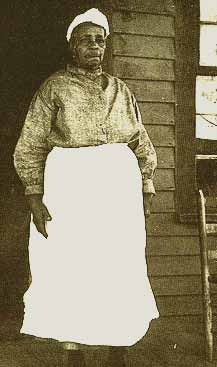|

|
|
Post Slavery: Is She Free?
|
| In the era of the New South starting in 1890, women, black and white, were utilized for farm laborers for their
families of sharecroppers or tenant farmers. This work on a farm, necessary as it was for income, took priority
over all the women's other commitments or responsibilities. The difference between the men's labor and the women's
was reminiscent of slavery times; the men did only "men's work," while the women did "women's work"
and, if necessary, that of the men, too. The women stayed home to tend to the children, the household, and the
farm. Men went into town for business, driving the women to be socially dependent on kin, neighbors, and church. |
|

|
These social limitations were only intensified for black women. The matrix of domination forced black women into
the lowest level on the social hierarchy; they were socially punished by both their gender and their race. Consequently,
their career opportunities were extremely limited. Before the Civil Rights Era, they had two basic career choices,
a domestic servant in a white household, or a teacher. Because of the greater range of skilled laborer positions
available to black men, many parents would send their daughters to college, if at all possible, before they would
send their sons.
Women in the South of both races were seeking independence during this time period, and were moving away from the
restrictions of rural life. "Beginning in the 1880s and increasing in the early decades of the twentieth century,
Southern women migrated into small towns and cities in search of greater opportunities for work than were available
on the land," (Janiewski, 20). While white women were able to find work in factories and mills, unskilled
black women were excluded from these jobs and forced to work as domestics with longer hours and considerably less
pay than their white peers. |
| A man who could support his family without sending his wife to work enjoyed in that a symbol of status. The poorest
of families had mothers and daughters working outside of the family, either as hired field hands or domestics,
and those with a little more income could afford to work for others at home, by doing such tasks as bringing in
another family's laundry. To stay at home responsible only for the care of the house and children was a privilege
indeed, though families in towns with women in the wage-earning work force were far less dominantly patriarchal
than those with women working at home where the male head of the family had much more control over the actions
of everyone in it. |
| Women continued to work more and earn less. In the 1920s, 65% of women of black landowning families worked in the
fields, and of the women in the lower echelon of farming, sharecropping and tenant farming, 90% of women worked
in the fields. "By the 1930s, a two wage-earner [black] household with five children was still trying to live
on fourteen dollars a week while a similar white family could bring home twice that much," (Janiewski, 29).
The black woman's work seemed just like slavery, with its small pay, exhausting hours, the subjection to work in
the households whites, and the constant threat of sexual harassment. |

|
|
 
|
![]()